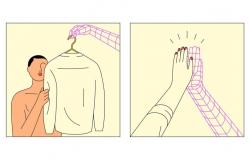The Confederation’s radium action plan made it possible to clean up more than 160 contaminated former watchmaking workshops. Some 250 old landfills that could contain radium waste have been identified, according to a report adopted on Wednesday by the Federal Council.
Used in watchmaking until the 1960s for its luminescent properties, particularly on watch hands, radium is a carcinogenic substance. As part of the action plan, almost 1,100 buildings potentially contaminated with radium were identified based on extensive historical research, mainly in the cantons of Bern, Neuchâtel and Solothurn.
Following diagnostic measures, more than 160 of these buildings (or adjoining gardens) had to be cleaned up. The towns of La Chaux-de-Fonds (360) and Bienne (205) are the most affected. This work has made it possible to significantly reduce the exposure of current and future occupants to radium and to guarantee the long-term habitability of the buildings, estimates the Federal Council.
The costs of sanitation have largely been covered by the Confederation, the people or companies behind the contamination being rarely identifiable. In total, the action plan cost nearly 11 million francs, the government said in a press release. Originally planned for five years, the action plan ultimately extended over ten years, revealing the extent of the historical use of radium in the watchmaking industry.
Still 250 old landfills
A strategy has also been developed for the long-term management of more than 250 old landfills likely to contain contaminated waste, and which require radiation protection measures in the event of future excavation work.
The action plan achieved its objectives in terms of protecting the health of the population and workers, as well as the environment. But the discovery of future radium legacies cannot be excluded, concludes the Federal Council.
Exposed workers
Radium was used in the watchmaking industry between the 1920s and 1960s. Despite the precautions taken to lose as little as possible, radium being very expensive, employees were exposed.
At the time, given the summary management of radioactive waste generated by these applications, radium residues ended up in household waste and were placed in ordinary landfills without any particular precautionary measures.
ats/lan
Business






